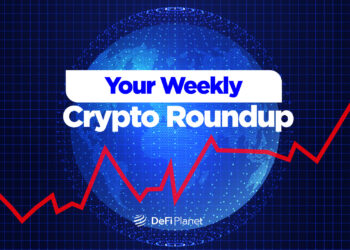The Euro Coin (EURC) was Circle’s attempt to create a replica of its successful USDC stablecoin for another major currency, the Euro. It launched it on major centralized exchanges on July 6, 2022, as a new ERC-20 stablecoin backed by the Euro at a 1:1 ratio, offering a stable alternative at a time when concerns about dollar-pegged stablecoins were mounting.
Circle described EURC as a “regulated, euro-backed stablecoin” that follows the same full-reserve model as USDC, meaning every token is fully backed by real euros.
Now, two years after its public trading release, we are asking how EURC has performed so far. How does it compare to its dollar-based competitors? These questions and more will be addressed in this analysis.
How Has EURC Performed So Far?
To evaluate EURC’s performance since launch, we analyze two key metrics: trading volume and market capitalization. Trading volume shows the total value of EURC bought and sold over a period, indicating liquidity. High trading volume signals strong liquidity, i.e., it is easier for users to trade EURC without significantly affecting its price. On the other hand, market capitalization, or the total value of all EURC tokens in circulation, provides insight into its market presence and adoption.
EURC has gradually gained traction, reflecting steady growth in both metrics despite some fluctuations. Since launch, its integration with platforms across Europe has helped boost these numbers. Notable adopters like Etsy and Bitpanda have been key in expanding EURC’s visibility and practical uses, marking an important step in its acceptance in the digital economy.
Trading Volume Trends
EURC launched with a modest trading volume of $2,139, which spiked to $75,677 within 72 hours, an impressive increase of over 3,400%. By the end of July 2022, volume had risen to $78,017, finishing the year at $295,538, representing a 278.82% increase over its initial levels. Throughout 2023, EURC’s trading volume exhibited a pattern of intense fluctuations, closing the year with a significant year-on-year increase of 169.06%, despite a notable dip in September.
Market Capitalization Trends
EURC’s market capitalization reached a peak of $76.5 million by August 2022 but then saw a decrease to $26.6 million by the year’s end. This downward trend reversed in 2023, as the token’s market cap increased to over $57 million by December, marking a 115% year-on-year rise. The positive momentum has extended into 2024, with the market cap reaching $93.6 million as of October 2024, showing EURC’s resilience and growing acceptance.
Performance Comparison: EURC vs. USDC
When EURC launched, Circle’s USDC was already an established dollar-backed stablecoin with a substantial market. In contrast to EURC’s $2,139 starting volume, USDC boasted a trading volume of approximately $5.4 billion. However, USDC’s trading volume significantly declined by the end of 2022, marking a 75.41% drop, while EURC grew during the same period, albeit from a much smaller base.
In terms of market cap, EURC made strides, increasing from zero to $26.6 million by the end of 2022, while USDC’s market cap declined by 20.16%. Over 2023 and into 2024, EURC has seen continued growth, while USDC has experienced mixed performance. This shift highlights the different trajectories and levels of market adoption for the two stablecoins.
EURC’s relatively lower market capitalization and trading volume compared to USDC and other dollar-pegged stablecoins can be attributed to the euro’s niche demand in the digital asset space. However, the steady growth in these metrics shows that EURC has gained a reliable user base, especially within the European market where euro-pegged assets are increasingly sought.
Future Outlook
Since its launch, EURC has shown a positive yet challenging journey. With growing concerns around dollar-backed stablecoins, Circle’s approach to a fully euro-backed stablecoin has seen modest success, particularly in Europe. While EURC’s adoption rates and trading volume remain below that of dollar-backed stablecoins, its strong performance in 2023 and 2024 underscores an emerging demand for euro-backed digital assets.
Looking ahead, EURC’s trajectory will likely depend on broader crypto market trends and regulatory support in Europe. A continued focus on transparency, integration with more payment platforms, and increasing partnerships with European companies will be essential to foster its adoption. As the stablecoin market evolves, EURC has the potential to fill a unique space, catering to users and businesses in the Eurozone and beyond.
Disclaimer: This article is intended solely for informational purposes and should not be considered trading or investment advice. Nothing herein should be construed as financial, legal, or tax advice. Trading or investing in cryptocurrencies carries a considerable risk of financial loss. Always conduct due diligence.
If you would like to read more market analyses like this, visit DeFi Planet and follow us on Twitter, LinkedIn, Facebook, Instagram, and CoinMarketCap Community.
Take control of your crypto portfolio with MARKETS PRO, DeFi Planet’s suite of analytics tools.”



















